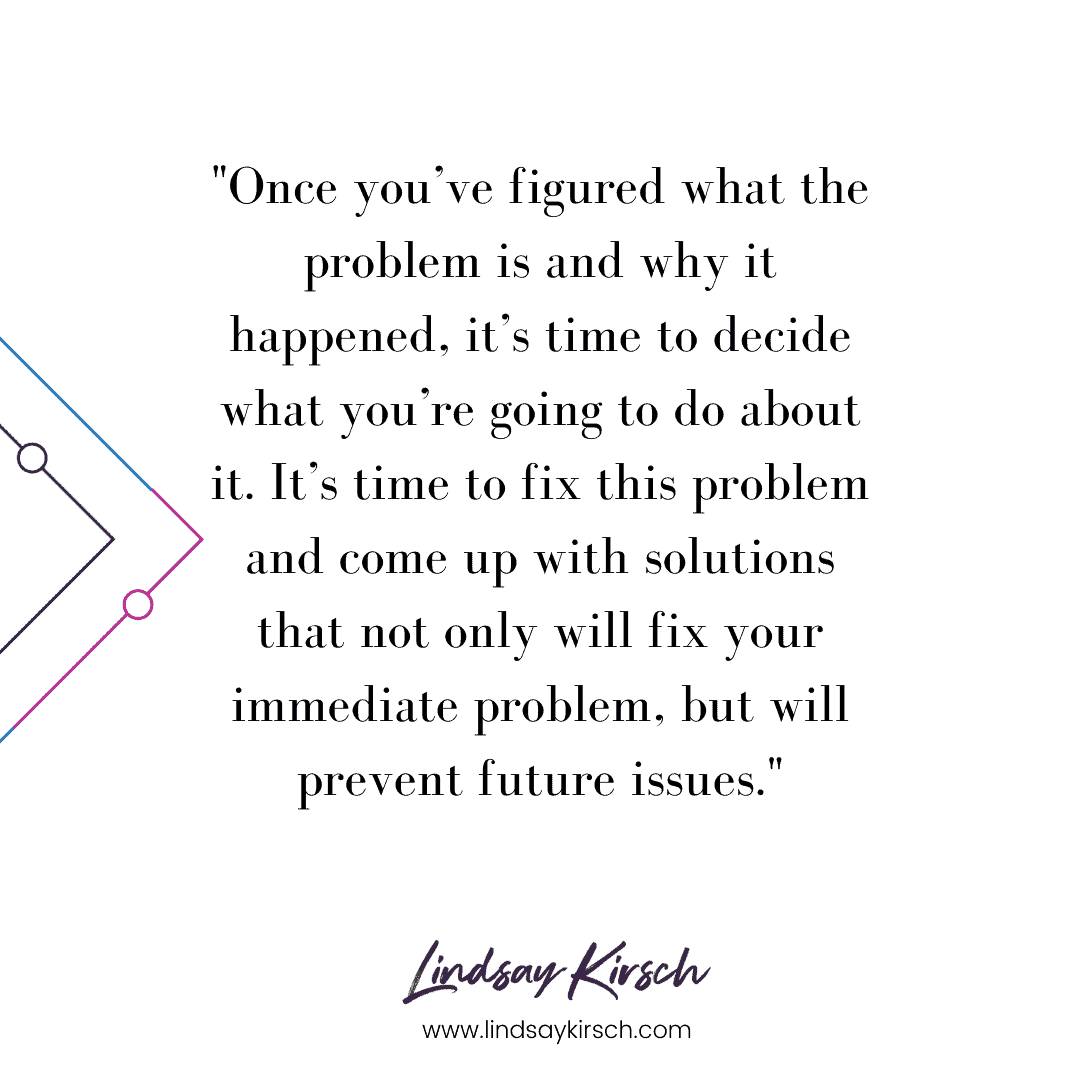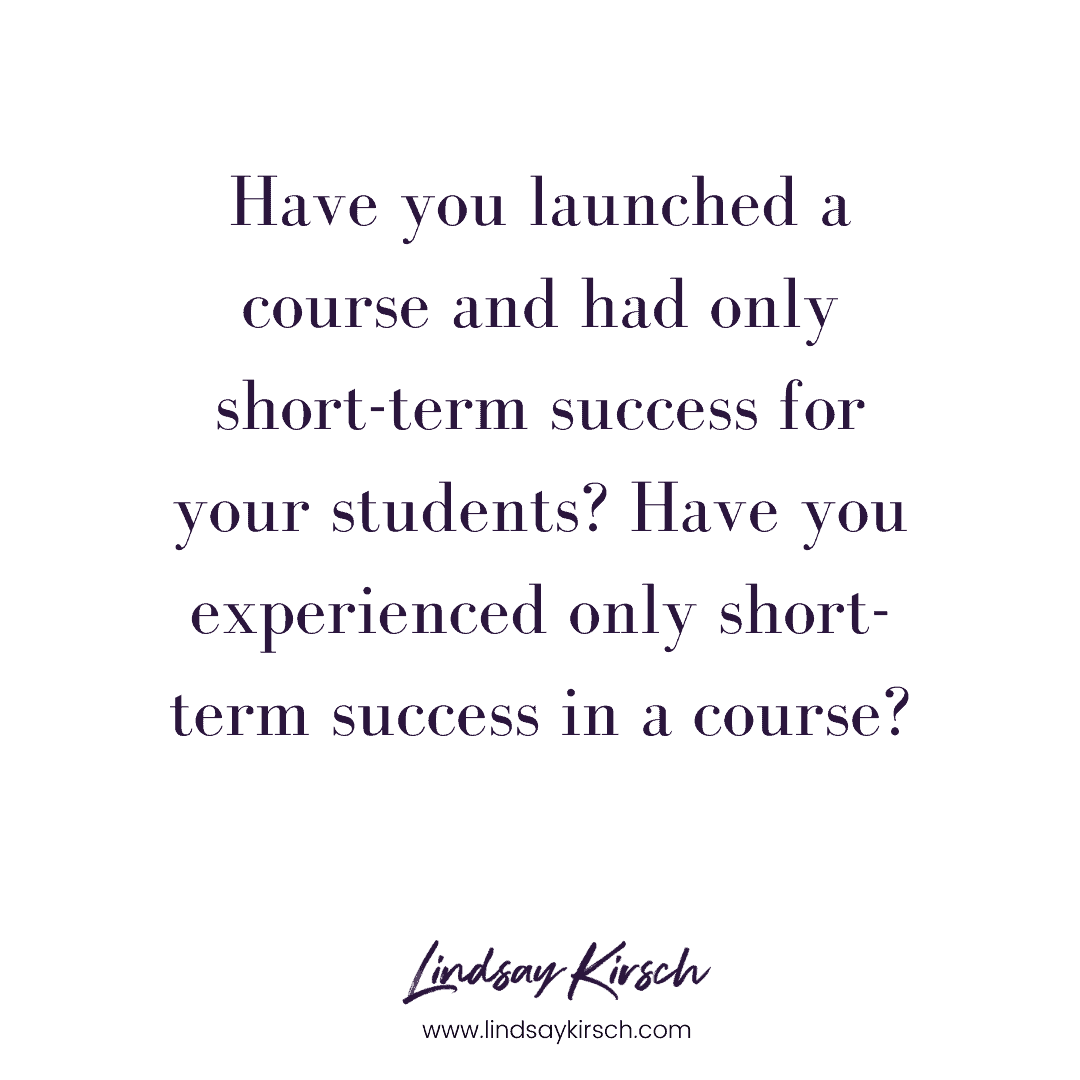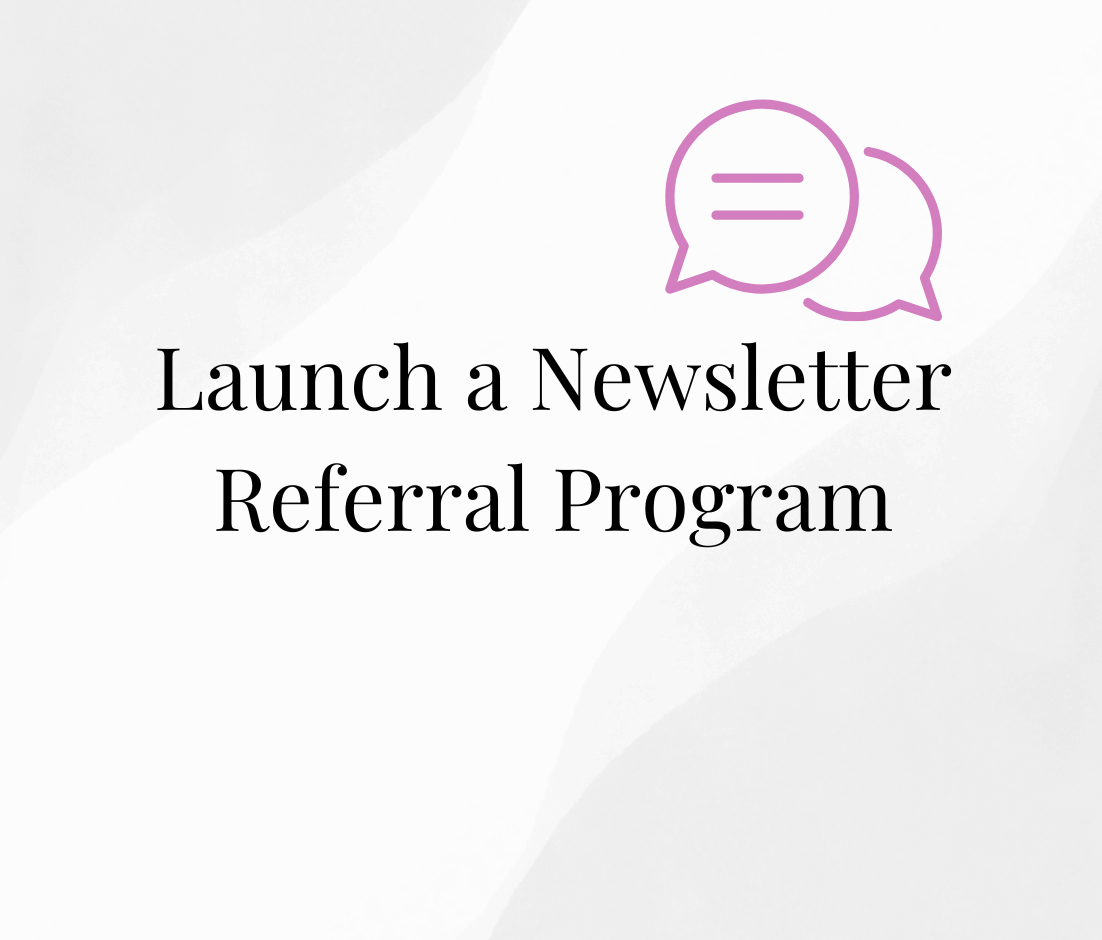You may have this terrific idea for a course, an idea that you know your audience will need and get a lot out of. But do you know that they ready for the life change you’re ushering them into?
I have a friend, Tina, who is a registered dietitian and has this course for her nutrition business. It’s a course that helps people quit sugar. Sounds like a great idea, right?
And it is. A lot of people are looking to be healthier and want to reduce their sugar intake. But she’s having a hard time understanding where and why people are having such a hard time with her course.
She thinks her program is awesome. And people were successful throughout it. But when she checked in with participants after three months, she found out that most people had relapsed.
She really wanted to help her audience out and she was sure that this course would be the way to do it.
So what can she do?
Tina’s really bummed out, frustrated, and sad that her course didn’t have the long-term impact she expected. She had put a lot of time and effort into this product, and really believes in her message, but now it seems that it was only successful in the short-term.
Was it all just a waste? Can she really help her audience with this goal of quitting sugar?
You Gotta Know Where You’re At to Know Where You’re Headed
So in the case of my friend, and for anyone else creating a course–before creating any type of course, and expecting long-term results from your audience, you have to have a real understanding of where they’re coming from.
If you don’t know where they’re coming from, then you can’t get them where they want to go. And sometimes, people don’t know what they don’t know.
So you’ve got to go and investigate!
But where do you start?
How Did We Get Here? Looking at the Roots
When your course has lackluster results, you need to get to the root of the problem so you can figure out how to fix it.
The first thing you need to do to understand why your course didn’t do as well as it could have is to define the problem. Identify, what’s going wrong here?
For Tina, the audience was doing great during the program, but after the program had ended, they all seemed to be back on sugar again. The goal of quitting sugar seemed out of reach once the course ended.
The next step is the figure of why this happened. It’s time to get a little analytical and dig into the problem’s cause.
For the quit sugar course, my friend had a great program that provided a lot of structure and support but didn’t realize that her audience needed extra support when the program ended. She had told them to find support in their families and communities…but that was about it.
Tina also realized that she hadn’t really impressed on them how important it was to have support. She thought that, through the program, she had modeled the behavior enough for her audience to understand. Tina had now identified, that the success of her program, actually reached beyond the program timeline itself!
Finally, once you’ve figured what the problem is and why it happened, it’s time to decide what you’re going to do about it. It’s time to fix this problem and come up with solutions that not only will fix your immediate problem but will prevent future issues.
Tina decided to develop some ongoing support tools and created a way to allow her online group to stay a group and keep supporting each other. After all, she wants to help people long term and make substantial life changes… rather than just for the timeline of the program.

Digger Deeper: Creating Environments of Learning Success
The environment of your course should be like fertile soil for your audience to grow and become successful. They can’t just have the course information, and you definitely don’t want to burden them with an info dump.
You have to look at your course’s environment, where your audience learns and grows. So consider the three following elements for healthy learning success.
1. Information and feedback
Ask yourself: is your audience getting feedback on their choices every day? For example, if their problem is that they are often sick, tired, and overweight, do they recognize this in their bodies? Do they have any type of information to realize the problem and make a change about it?
For Tina, she did have a lot of information about the benefits of having a sugar-free diet. She really wanted to sell the benefits. But she didn’t have as much information about how to deal with temptation or what sugar does to the body and helping the participants recognize this in their own bodies. So for her learners, going back to sugar wasn’t that big of a deal until they felt sluggish and gross again.
She also wasn’t providing as much feedback as she could have been. She saw people talking in the online forum and she would chime in every once in a while. She decided that she would be more active there and talk to every participant every week as a way to check in on progress.
2. Support, such as resources and tools
To make a life change, knowledge is power, but it helps to have support for that change. This would include what type of people or support system they have in place. For example, access to a medical practitioner that helps them realize they have a problem and then provides them with education or solutions.
In terms of support, Tina decided that she was going to extend her Facebook group for graduates of her program as well as to offer group coaching calls every week. She was better able to see how people were doing, to hear their struggles and triumphs, and to give feedback when necessary.
She also used the group to issue prompts, provide continuous motivation, and help her participants stay focused and successful on an ongoing basis.
3. Consequences, incentives, and rewards
When it comes to your course, you have to go on a journey of learning about your students. The following are three questions you should ask about where your students are, how appropriate they are for your course, and the chances of them buying your info product.
What are the current consequences of living life before your course? What is it costing them to live this life?
Example: I love to eat sugar, but the consequence is that it impacts my mood, my skin, and especially how my stomach feels.
What incentives do they have to improve their life? What would make it better for them?
Example: I know that if I reduced my sugar intake, it would probably make me a happier and healthier person. But I’m struggling to find a real, concrete way to make this happen. So, I just keep eating sugar.
What rewards do they currently experience for living this way?
Example: My reward is that it’s easier to live this way. I don’t have to look at labels or over analyze my food. I just eat what I want to eat.
So using the above examples of a fictional prospective student, where that person currently is–she probably isn’t an ideal candidate for a how-to quit sugar course She seems pretty happy to be eating sugar.
However, if her mindset can be shifted, she might be a great candidate!

How Your Students Contribute to the Success of Your Course
After you’ve examined what you could be doing better, as well as looked at the consequences, incentives, and rewards for staying where they are before they start your program, it’s time to see what they bring to the table. Here are three areas worth exploring.
- Do your students even have theknowledge and skills to do what you are asking them? Maybe your course requires some prerequisites because this is an advanced course.
- Do they have the capacity to do what you are asking them to do? Maybe your course takes a lot of time per week, which is something you can state upfront.
- What are their motivations/expectations? Do they want to take this course to impress others, or for self-enrichment? It really does make a difference.

Look at the Many Sides of a Problem
As you can tell, why your course isn’t doing well can be for a number of reasons.
Identifying the areas where your problem is most prominent, where there the greatest learning gap is, will help you determine if you can help them solve this through a course.
Once you’ve looked at your problem from different sides, what you learn about it will also help you narrow down your niche and target audience. The better you do this, the more likely you are to deliver the product your customers want and expect.
But the people who just want to a quick buck–they won’t be making the time and effort to make their products better. They’re only in it for the short-term.
But we’re in it for the long haul. We want to provide high-quality products that not only help to shape and change lives while people take our courses but well after the class ends.
We want to make sure that we have the right students in our courses, from the beginning. We want to be there for them as they take the course, providing feedback and support. And we want long-term success for our students and for our businesses.
Let’s hear your experiences in the comments.



